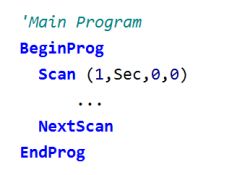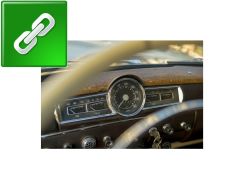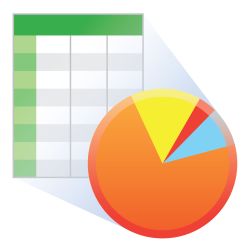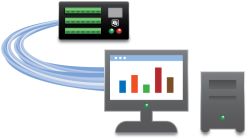This product is not available for new orders. We recommend ordering: CR350.

| Services Available |
|---|
Resumen
El CR850 es un datalogger con pocos canales, de grado científico y que incluye un teclado/display en su frontal. Es ideal para configuraciones con pocos sensores. El CR850 realiza las medidas de los sensores, y transmite los datos mediante los periféricos de comunicaciones; son compatibles la mayoría de sensores y periféricos de comunicaciones. Puede funcionar autónomamente o formar parte de una red de dataloggers.
Leer másVentajas y características
- Teclado y pantalla de visualización integrados que permiten en el lugar, programar, iniciar manualmente la transferencia de datos y ver los datos
- Es ideal en aplicaciones relacionadas con perfil viento, estaciones meteorológicas, ETo/agricultura, calidad del aire, humedad suelo, nivel agua, acuacultura, ensayos automoción, TDR (Time Domain Reflectometry), SCADA, y calidad de aguas
- El CR800 y CR850 tienen un diseño simple. Son fáciles de programar y cablear
- Admite comunicaciones serie RS232 con sensores inteligentes y dispositivos compatibles, a través de los puertos COM del datalogger (puertos de control a pares)
- Contiene un chip ASIC que expande la capacidad de contaje de pulsos, puertos de control y comunicaciones serie
- Soporta protocolos PakBus, Modbus, SDI-12 y DNP3
- Compatible con periféricos de ampliación de canales, permitiendo expandir el sistema de adquisición
- Incluye puertos CS I/O y RS-232 para conectar dispositivos de comunicación
- Entradas protegidas por tubos de descarga de gas (GDT)
- Reloj salvaguardado por pila interna, lo cual permite tener en hora el datalogger aunque no haya alimentación externa
- Programable con LoggerNet, PC400, o Short Cut
Imágenes










Ficheros CAD:
Descripción detallada
El CR850 lo forman toda una electrónica encapsulada dentro de una carcasa de plástico y el panel de conexiones, junto con un teclado/display en el frontal. El display puede mostrar 8 lineas x 21 carácteres (64 x 128 pixels).
Se pueden diseñar menús personalizados, de forma que el usuario pueda elegir opciones. El teclado/display se puede usar también para programar el datalogger, iniciar manalmente transferencia de datos y visualizar datos.
Este datalogger se alimenta externamente y admite teclado/display externo. Su bajo consumo hace que funcione por largos períodos de tiempo aún utilizando una batería recargable con placa solar — sin necesidad de disponer de 220Vac. Cuando la alimentación está por debajo de 9.6 V, se detiene, reduciendo la posibilidad de realizar medidas incorrectas.
El sistema operativo incluye instrucciones para programar el datalogger: de medida, de procesado de datos y de almacenamiento (output). El lenguaje de programación, denominado CRBasic, usa una sintaxis similar al BASIC. Incluye instrucciones de medida para puentes de medida, voltaje, termopares y pulsos/frecuencia. Las instrucciones de procesado incluyen operaciones algebraicas y estadísticas. Las instrucciones de salida procesan los datos a intervalos de tiempo programables y permiten controlar dispositivos externos.
Productos similares
Preguntas frecuentes
Número de FAQs relacionadas con CR850: 148
Expandir todoDesplegar todo
-
Yes, using the DisplayMenu/EndMenu() and MenuItem instructions.
-
No, unless the internal lithium battery is below 2.7 Vdc. The lithium battery helps preserve the data, program, and clock setting when the 12 Vdc battery is removed.
-
Yes, unless the CR1000 program contains measurement instructions for channels not available on the CR800 or CR850.
-
No. The CR800 and CR850 do not have the necessary peripheral port to connect to an NL115.
-
Use the CURS100 device or a precision 100 ohm resistor to make 4 to 20 mA measurements.
-
Calibration is recommended every two years.
-
Yes. Refer to the SerialIn() and SerialOut() instructions in the CRBasic Editor.
-
LoggerNet is available in a Linux version (LNLINUX).
Compatibilidad
Nota: lo siguiente muestra información de compatibilidad notable. No es una lista de todos los productos compatibles.
Software
| Producto | Compatible | Nota |
|---|---|---|
| LoggerNet | (Version 3.3 or higher) | |
| PC200 (retired) | ||
| PC400 | (Version 1.4 or higher) | |
| RTDAQ | ||
| Short Cut |
Miscelaneo
| Producto | Compatible | Nota |
|---|---|---|
| VISUALWEATHER | (Version 2 or higher) |
Información de compatibilidad adicional
Sensors
With several channel types, the CR850 is compatible with nearly every available sensor, including thermocouples, SDI-12 sensors, and 4 to 20 mA sensors. A custom ASIC chip expands its pulse count, control port, and serial communications capabilities. The CR850's I/O ports can be paired as transmit and receive, allowing serial communications with serial sensors and devices.
Measurement & Control Peripherals
The CR850 is compatible with all of our CDMs (requires an SC-CPI), SDMs, multiplexers, vibrating-wire interfaces, terminal input modules, and relays.
Communications
The CR850 communicates with a PC via direct connect, NL201 Ethernet Interface, multidrop modems, short haul modems, phone modems (land line, digital cellular, and voice-synthesized), RF telemetry, and satellite transmitters (Argos and High Data Rate GOES).
Data can be viewed on its onboard keyboard display, CD100 Mountable Display with Keypad, user-supplied iOS or Android device (requires LoggerLink), CD295 DataView II Display, or a user-supplied PDA (PConnect or PConnectCE software required).
The SC115 is the only compatible external data storage device. The CR850 does not have a peripheral port and is therefore not compatible with the CFM100, NL115, or NL120.
Enclosures
The CR850 and its power supply can be housed in any of our standard enclosures.
Power
Any 12 Vdc source can power the CR850 datalogger. Power supplies commonly used with the CR850 are the BPALK, PS100, and PS200. The BPALK provides eight non-rechargeable D-cell alkaline batteries with a 7.5 A h rating at 20°C.
Both the PS100 and PS200 consist of a sealed rechargeable 7 A h battery and a charging regulator. Their battery should be connected to a charging source (either a wall charger or solar panel). These two power supplies differ in their charging regulator. The PS100 has a standard regulator and the PS200 has a micro-controller-based smart regulator. The PS200's regulator provides two-step constant voltage charging and temperature compensation that optimize battery charging and increases the battery’s life.
Also available are the BP12 and BP24 battery packs, which provide nominal ratings of 12 and 24 A h, respectively. These batteries should be connected to a regulated charging source (e.g., a CH100 or CH200 connected to a unregulated solar panel or wall charger).
Software
CRBasic, the CR850's full programming language, supports simple or complex programming and many onboard data reduction processes.
Especificaciones
| -NOTE- | Note: Additional specifications are listed in the CR800-Series Specifications Sheet. |
| Operating Temperature Range |
|
| Maximum Scan Rate | 100 Hz |
| Analog Inputs | 6 single-ended or 3 differential (individually configured) |
| Pulse Counters | 2 |
| Voltage Excitation Terminals | 2 (VX1, VX2) |
| Communications Ports |
|
| Switched 12 Volt | 1 terminal |
| Digital I/O |
|
| Input Limits | ±5 V |
| Analog Voltage Accuracy | ±(0.06% of reading + offset) at 0° to 40°C |
| ADC | 13-bit |
| Power Requirements | 9.6 to 16 Vdc |
| Real-Time Clock Accuracy | ±3 min. per year (Correction via GPS optional.) |
| Internet Protocols | FTP, HTTP, XML POP3, SMTP, Telnet, NTCIP, NTP |
| Communication Protocols | PakBus, Modbus, DNP3, SDI-12, SDM |
| Idle Current Drain, Average | 1 mA (@ 12 Vdc) |
| Active Current Drain, Average |
|
| Dimensions | 24.1 x 10.4 x 5.1 cm (9.5 x 4.1 x 2 in.) |
| Weight | 0.7 kg (1.5 lb) |
Documentos
Folletos producto
Documentos técnicos
- Voltage Accuracy, Self-Calibration, and Ratiometric Measurements
- Preventing and Attacking Measurement Noise Problems
- Benefits of Input Reversal and Excitation Reversal for Voltage Measurements
- BACnet to Modbus Protocol Conversion (App. Note: 1M-C)
- Data Streaming
- Serial Sensors: Interfacing with CSI Dataloggers (App. Note Code: 2MI-V)
- DNP3 with Campbell Scientific Dataloggers
- FTP Troubleshooting
Conformidad
Videos & Tutoriales
Descargas
CR800 OS v.32.07 (4.41 MB) 15-05-2024
Execution of this download installs the CR800 Operating System and Compiler on your computer. It also updates the CR800 support files for the CRBasic Editor.
Note: This OS has crossed the 2 Meg CR800 size limit for remote download. The OS must be downloaded to the 2 Meg CR800 via direct connect with the Device Configuration Utility. All OS download methods are supported by the 4 Meg CR800.
Upgrading from versions prior to version 28 of the Operating System will reset the datalogger’s CPU drive. This is due to a change in the format of the file system from FAT16 to FAT32. In order for the datalogger to operate correctly, as part of the upgrade, the CPU drive is formatted to FAT32. Any programs stored and running from the CPU drive will be lost. It is not recommended to update the datalogger’s Operating System over a remote connection where program control regulates the communication equipment (turning it on or off, etc.). In these cases, an on-site visit and a backup using DevConfig’s backup utility is necessary to update the datalogger’s Operating System.
Watch the Video Tutorial: Sending an OS to a Local Datalogger.
In all cases where the datalogger is being updated from an Operating System prior to 28, the use of DevConfig’s backup utility is recommended due to the CPU drive being formatted using the new FAT32 format.
Device Configuration Utility v.2.32.01 (47.7 MB) 15-04-2025
A software utility used to download operating systems and set up Campbell Scientific hardware. Also will update PakBus Graph and the Network Planner if they have been installed previously by another Campbell Scientific software package.
Supported Operating Systems:
Windows 11 or 10 (Both 32 and 64 bit)
Casos de aplicación
In August 2012, RESPEC was contracted to provide field instrumentation and early-warning monitoring services at......leer más
The semiarid region just north of the Black Hills in western South Dakota has vast......leer más
The Charlotte-Mecklenburg Flood Information and Notification System (FINS) consists of over 125 gaging stations spread......leer más
Weather is, of course, a critical component of safe and efficient air travel. Pilots, navigators,......leer más
High-grade coal has been mined on the West Coast of New Zealand since the 1870s.......leer más


































































